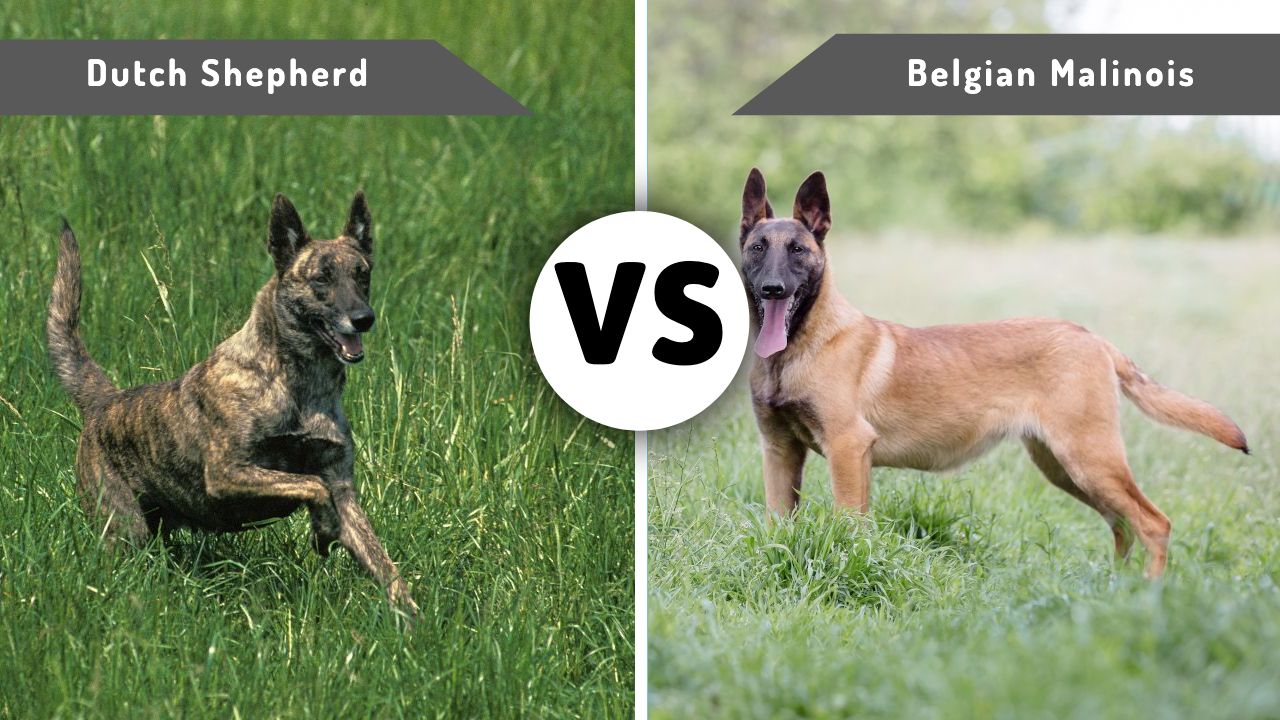
Welcome, fellow dog lovers! Today, we are going to delve deep into the fascinating world of two extraordinary dog breeds: the Dutch Shepherd and the Belgian Malinois. Both breeds are known for their intelligence, versatility, and high-energy nature, but they also have unique qualities that make them stand out.
In this comprehensive guide, we’ll explore and compare these breeds in detail, illuminating their history, physical characteristics, temperament, trainability, health, and suitability for different types of families and lifestyles.
Whether you’re a potential dog owner trying to decide which dog breed will fit best into your life or simply a curious dog lover seeking to expand your knowledge, this post aims to provide a clear, in-depth understanding of these two remarkable breeds.
So, buckle up and prepare for a journey into the exciting world of the Dutch Shepherd and the Belgian Malinois! Let’s dig into the specifics and help you discover which of these might just be your perfect canine companion.
| BREED COMPARISON | ||
|---|---|---|
| Dutch Shepherd | Belgian Malinois | |
| Weight | 40 - 75 pounds | 40 - 80 pounds |
| Height | 21.5 - 24.5 inches | 22 - 26 inches |
| Size | Medium to large | Medium to large |
| Temperament | Intelligent, athletic, reliable | Smart, confident, hardworking |
| Trainability | 5.0 out of 5.0 stars5.0 | 5.0 out of 5.0 stars5.0 |
| Energy Level | 4.0 out of 5.0 stars4.0 | 5.0 out of 5.0 stars5.0 |
| Life Expectancy | 11 - 14 years | 14 - 16 years |
| Shedding | 3.0 out of 5.0 stars3.0 | 3.0 out of 5.0 stars3.0 |
| Hypoallergenic | No | No |
| Puppy Costs | $1,000 - $2,500 | $800 - $9,000 |
| Suitable For | Dutch Shepherds, known for their reliable and adaptable nature, can fit seamlessly into a variety of lifestyles. They are generally good with children and other animals, making them excellent family pets. | The Belgian Malinois is highly active, intelligent, loyal, and protective of their families, making them an excellent guard dog. They thrive in homes with secured, spacious yards where they can run and play or households that can provide plenty of exercise opportunities. |
Breed Origins and History
Diving headfirst into the past, we’ll uncover the origins and history of both the Dutch Shepherd and the Belgian Malinois. These two breeds have been shaped by their historical roles, which continue to influence their characteristics today.
Dutch Shepherd History
The Dutch Shepherd, also known as Hollandse Herder, has its roots in the rural regions of the Netherlands. Originally developed as a herding dog, this breed was a reliable assistant for shepherds.
With their robust physique and intelligence, Dutch Shepherds were responsible for herding sheep, guarding properties, and even pulling carts. They were designed to be versatile, adaptable, and capable of independent thinking, qualities that remain central to their character today.
Belgian Malinois History
The Belgian Malinois, named after the Belgian city of Malines, descends from a broad range of Belgian herding dogs. The Malinois was bred for work and is one of four types of Belgian Belgian Shepherd dogs recognized today, the others being the Tervuren, Laekenois, and Groenendael.
The breed quickly gained popularity for its exceptional working abilities, particularly in guarding and herding tasks. Today, the Belgian Malinois has gained international recognition and is employed in various roles, from police and military work to search and rescue operations.
Comparison of Their Historical Roles and Evolution
Though both breeds were initially used as herding dogs, they evolved differently based on their geographical locations and the specific needs of their roles. The Dutch Shepherd was bred to be a jack-of-all-trades farm dog, ready to take on whatever task was needed. This versatility remains a key feature of the breed.
The Belgian Malinois, while also versatile, developed into a more specialized working dog. Their intensity, drive, and intelligence were honed for particular tasks, leading to their current status as a preferred breed for various professional roles around the world.
In essence, both are working dog breeds that have a rich history of working alongside humans. They have proven their worth time and time again, showing us that they are more than just pets; they are our companions, protectors, and helpers, lending their strengths to assist in numerous tasks.
Comparing Physical Appearance and Characteristics
Dutch Shepherd's Physical Traits
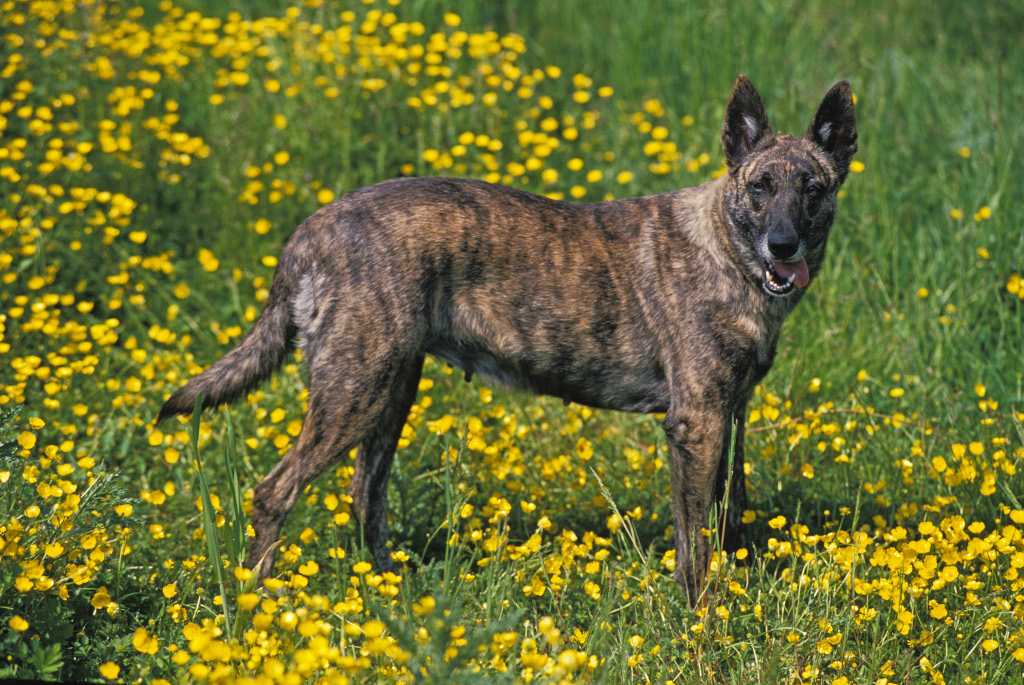
Dutch Shepherds are medium-to-large-sized dogs, typically weighing between 40 to 75 pounds, with males standing about 22.5 to 24.5 inches tall and females slightly shorter at about 21.5 to 23.5 inches tall.
They possess a strong, athletic build that speaks to their working dog roots. Their bodies are slightly longer than they are tall, contributing to a well-proportioned look. They feature a straight back, a deep chest, and a tail hanging straight down or with a slight curve when at rest.
One defining characteristic of Dutch Shepherds is their coat, which comes in three varieties: short, long, and rough. The color is typically brindle, varying from silver to gold. This unique coat color is one of the defining features that set them apart from other shepherd breeds.
Belgian Malinois' Physical Traits
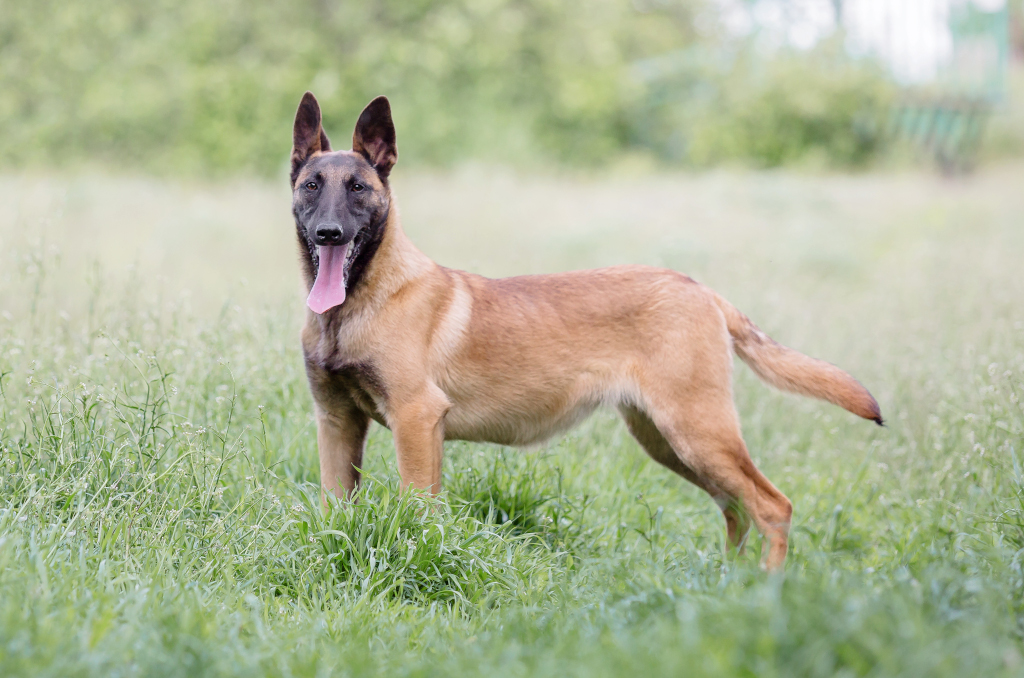
Belgian Malinois, like Dutch Shepherds, are also medium-to-large-sized dogs. They weigh between 40 to 80 pounds, with males standing 24 to 26 inches tall and females slightly shorter at 22 to 24 inches. They have a well-balanced, square-shaped body with a deep chest and a tail carried down when at rest.
Belgian Malinois has a short, thick double coat that’s typically fawn to mahogany with a black mask and black ears. Unlike Dutch Shepherds, Malinois do not have a brindle coat. Their intense, almond-shaped eyes are dark brown, providing a vigilant and intelligent expression.
Comparative Analysis of Their Appearances
While both breeds are of similar size and boast athletic, sturdy bodies designed for work, their coats set them apart. Dutch Shepherds’ brindle coat is a unique feature, while the Belgian Malinois is recognized for its characteristic black mask and ears, which contrast sharply with their lighter body fur.
These breeds also differ slightly in body shape. Dutch Shepherds have a more elongated body, whereas Belgian Malinois are distinctly square in profile. Despite these differences, both breeds exude a sense of power, intelligence, and agility, reflecting their long histories as working dogs.
Temperament and Personality
Dutch Shepherd Personality
The Dutch Shepherd is a faithful, reliable, and alert breed. They are known for their loyalty to their families and unwavering willingness to work. Despite their strong work ethic, Dutch Shepherds also have a bit of an independent streak, attributable to their history as autonomous decision-makers on the farm.
Dutch Shepherds are generally well-behaved and gentle with children and other animals, making them excellent family pets. They can be reserved with strangers but are rarely aggressive without cause. Their high intelligence and problem-solving skills make them quick learners and adapt well to various situations.
Belgian Malinois Personality
Belgian Malinois are known for their protective nature, intense work drive, and eagerness to please. They are highly trainable and excel in various roles, from police work to obedience competitions, owing to their high energy and focus.
While loyal and affectionate with their families, Belgian Malinois can be aloof or wary of strangers. Early socialization is vital to ensure they’re comfortable in different situations.
Comparative Analysis of Their Behavior Patterns
Both the Dutch Shepherd and Belgian Malinois are intelligent, loyal, and energetic breeds. However, the Dutch Shepherd tends to be a bit more relaxed and adaptable, making them slightly easier to manage for first-time dog owners or families with children.
On the other hand, the Belgian Malinois, with its intense drive and high energy levels, may be better suited to experienced dog owners who can provide them with the structured training, socialization, and job-oriented tasks they crave.
Remember, every dog is an individual, and while these general traits hold true for many, there can always be exceptions. It’s also crucial to note that both breeds require active engagement, early socialization, and consistent training to thrive.
Training and Exercise Needs: Dutch Shepherd vs. Belgian Malinois
Dutch Shepherd
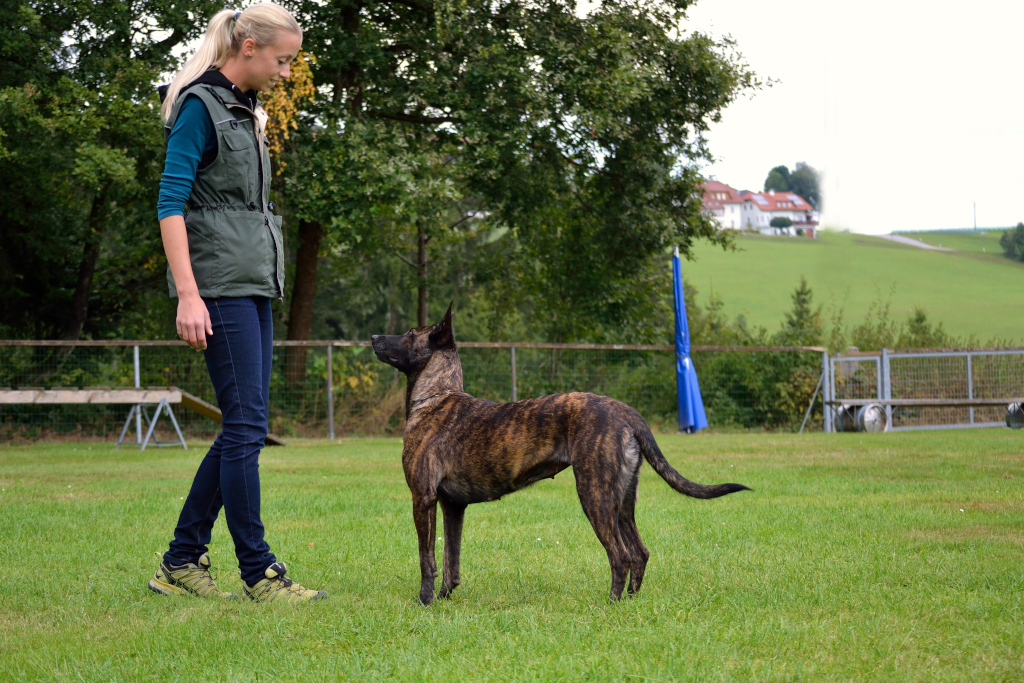
The Dutch Shepherd is a quick learner, thanks to their high intelligence and problem-solving capabilities. They respond well to training that’s consistent and incorporates a variety of tasks to keep them engaged. Positive reinforcement methods, including rewards and praise, tend to work best with this breed.
In terms of exercise, Dutch Shepherds are active and energetic dogs that need daily physical activity to keep them healthy and happy. This could include long walks, runs, bike rides, games of fetch, agility training, or even tasks that engage their mind as well as their body.
Their adaptable nature and keen sense of duty make them suitable for a variety of roles, from family pets to working dogs in search and rescue, therapy, and even sports like obedience and agility trials.
You May Also Like: How to Build a Dog Run
Belgian Malinois
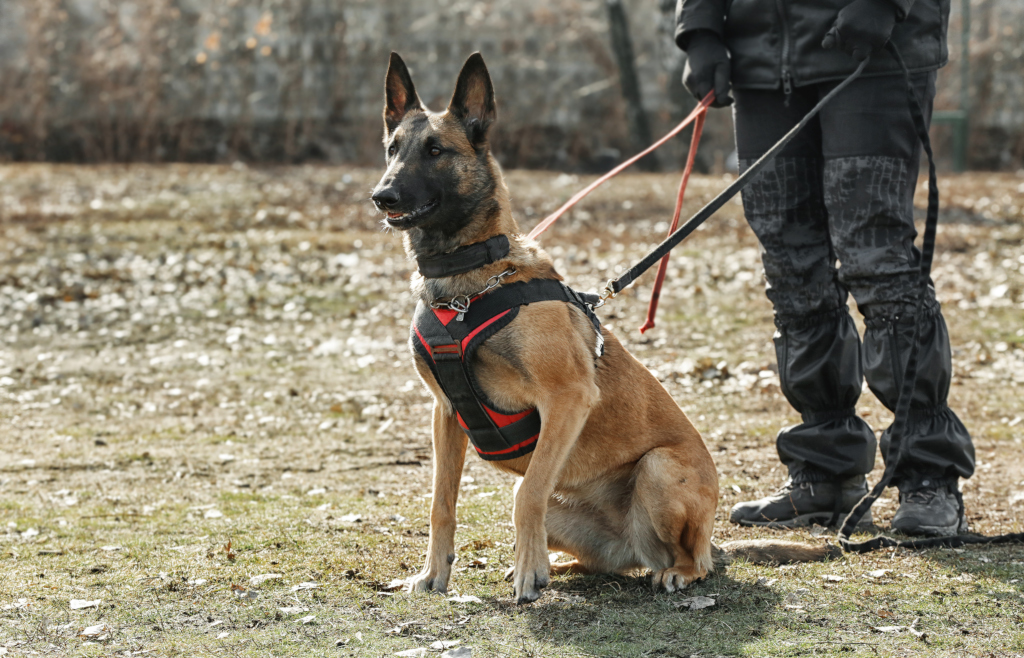
The Belgian Malinois is a highly intelligent breed renowned for its trainability and eagerness to please. Their focused nature makes them quick to pick up new commands and excel in structured training routines.
As for exercise, Belgian Malinois are high-energy dogs that require more than just a casual walk around the block. They thrive with active play, rigorous training exercises, and jobs that allow them to utilize their natural abilities. Regular physical and mental stimulation is crucial for this breed.
You May Also Like: 7 Popular Training Methods For Dogs
Comparison of Their Training Needs and Exercise Needs
Both the Dutch Shepherd and Belgian Malinois are intelligent and highly trainable dogs.
Dutch Shepherds are adaptable, intelligent, and independent, responding well to varied and engaging training routines. Their exercise needs are high, but they’re likely to be satisfied with a good mix of physical activity and mental stimulation.
Belgian Malinois, on the other hand, have an intense drive and focus, requiring structured training routines and a high level of mental stimulation. Their exercise needs are considerable, and they thrive when given tasks that engage both their mind and body.
In comparison, the Dutch Shepherd, while still an active breed, tends to have slightly lower exercise requirements than the Belgian Malinois. On the other hand, the Belgian Malinois is known for its exceptional stamina and drive. This breed thrives on intense physical exercise and mental challenges.
Common Health Issues and Average Lifespan
Dutch Shepherd
Dutch Shepherds are generally a robust and healthy breed with a lifespan of around 11-14 years. However, like all breeds, they are prone to certain health conditions. Potential health problems can include hip dysplasia, a common condition in many medium-to-large dog breeds, and progressive retinal atrophy, a group of degenerative diseases that can affect the dog’s eyesight.
Despite these potential issues, many Dutch Shepherds live healthy lives with proper care, regular veterinary check-ups, and a balanced diet.
You May Also Like: My Dog Won’t Sleep At Night: What to Do?
Belgian Malinois
Belgian Malinois are also generally healthy dogs and have a slightly longer lifespan than Dutch Shepherds, averaging around 14-16 years. They are prone to some health problems, such as hip and elbow dysplasia, progressive retinal atrophy, and certain skin allergies.
However, with regular vet check-ups, early detection of these conditions, and appropriate care, many Belgian Malinois can live healthy, fulfilling lives.
You May Also Like: Why Do Dogs Chew On Their Paws?
Author Note: Both breeds are generally healthy but may be prone to certain health conditions. Prospective owners should ensure they source their puppy from a reputable breeder who prioritizes health and temperament in their breeding program. Regular veterinary care and a balanced lifestyle are also essential to keep these breeds at their healthiest.
Diet and Nutritional Requirements
Dutch Shepherd
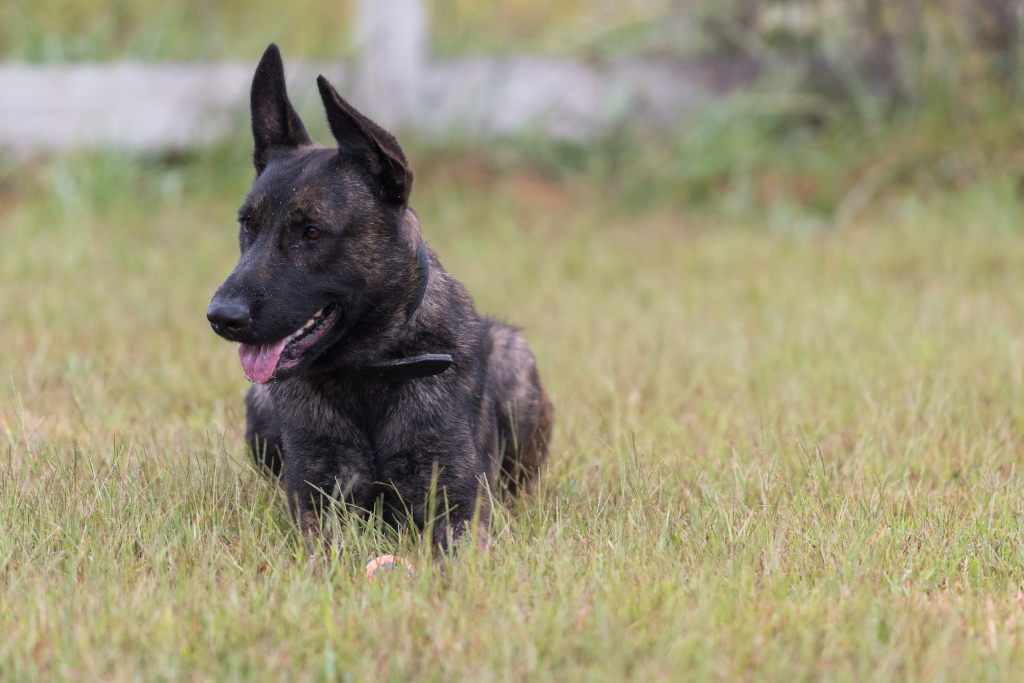
Dutch Shepherds are energetic, medium-to-large dogs, and their diet should be chosen with this in mind. They require high-quality, nutritionally balanced dog food, ideally formulated for active breeds. Look for food that lists real meat as the first ingredient, as a high-quality protein source is essential for maintaining their muscle tone.
When it comes to how much to feed them, they generally require 2 to 3 cups of high-quality kibbles, though the exact amount varies based on the dog’s age, size, and activity level. Always follow the feeding guide provided by the pet food manufacturer and consult with a vet if in doubt to ensure your Dutch Shepherd is getting the nutrition they need.
Belgian Malinois
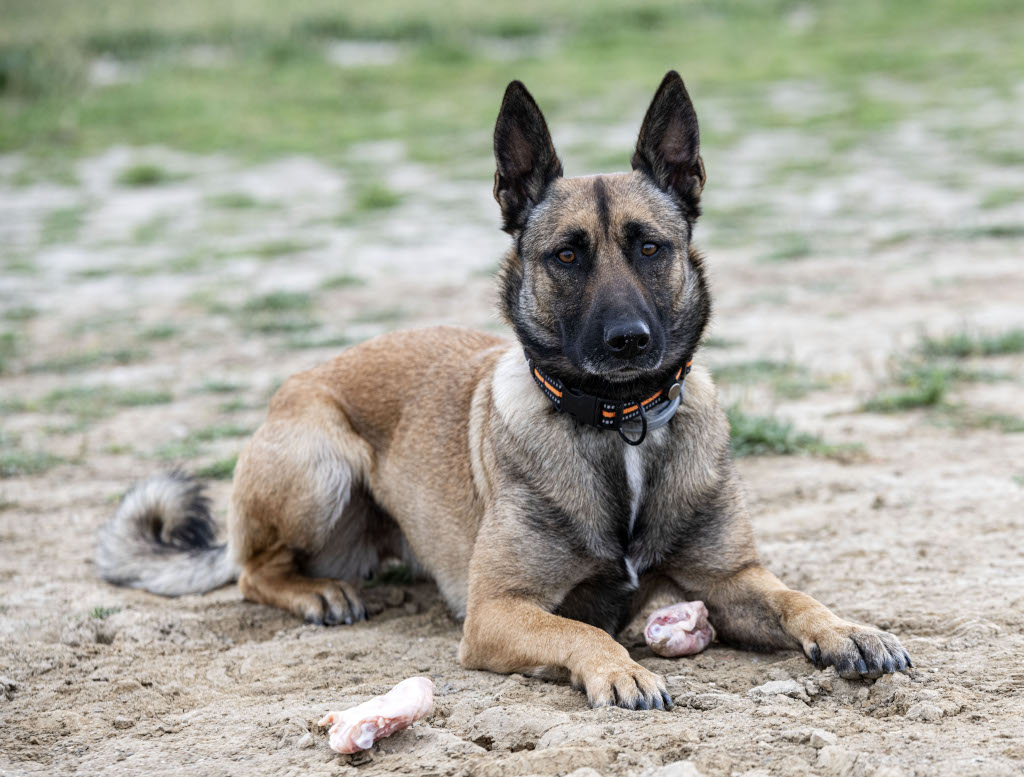
Belgian Malinois, similar to Dutch Shepherds, require a diet that supports their active lifestyle. They benefit from high-quality dog food rich in protein to support their muscular build. Real meat, such as chicken, beef, or fish, should be the first ingredient in their food.
Similarly, portion size will depend on their age, size, and activity level, and this breed generally also needs about 2 to 3 cups of dog food per day. Again, you’ll want to follow the manufacturer’s feeding guide and adjust as necessary with your vet’s guidance to prevent overfeeding or underfeeding.
You May Also Like: My Dog Won’t Eat: What to Do?
Grooming Needs: Dutch Shepherds vs. Belgian Malinois
Dutch Shepherd
The grooming requirements for Dutch Shepherds largely depend on their coat type.
Rough-haired Dutch Shepherds have the least demanding grooming needs, which typically only require brushing once a month to remove any tangles or mats and an occasional hand-stripping to remove dead hair.
Short-haired Dutch Shepherds will benefit from weekly brushing using a bristle brush to remove loose hair and maintain its shine.
Long-haired Dutch Shepherds, on the other hand, have a more luxurious and abundant coat that requires more attention. They should be brushed at least two to three times a week, and you’ll want to pay particular attention to areas prone to tangles and mats, such as behind the ears and around the legs.
It is important to note that regardless of coat type, all Dutch Shepherds should receive routine care such as nail trimming, dental hygiene, and ear cleaning to ensure their overall health and well-being.
You May Also Like: Best Dog Paw Washers
Belgian Malinois
Belgian Malinois has a short, weather-resistant double coat that requires relatively easy care. They should be brushed once or twice a week to remove loose hair and distribute skin oils. During shedding seasons, usually in spring and fall, they may require more frequent brushing to manage the excess hair.
Like Dutch Shepherds, Belgian Malinois should have their teeth brushed regularly to prevent dental issues, their nails trimmed to avoid overgrowth and splitting, and their ears checked for signs of infection.
You May Also Like: Best Waterless Dog Shampoo
Key Takeaways: Both Dutch Shepherds and Belgian Malinois require regular grooming to keep them looking their best and prevent potential health issues. And since Dutch Shepherds have three different coat types, they may need slightly more or less brushing than Malis.
Belgian Malinois vs. Dutch Shepherd: Suitability for Families and Lifestyle Needs
Dutch Shepherd
Dutch Shepherds, known for their reliable and adaptable nature, can fit seamlessly into a variety of lifestyles. They are generally good with children and other animals, making them excellent family pets.
Despite their active nature, they’re versatile enough to adapt to both city living in apartments (with adequate exercise) and life in the countryside with more space.
Their intelligence and energy require active engagement from their owners. A lifestyle that includes regular physical and mental stimulation—through walks, play, and training—would suit a Dutch Shepherd well.
You May Also Like: How to Keep Dogs From Digging Under A Fence
Belgian Malinois
The Belgian Malinois is highly active, intelligent, loyal, and protective of their families, making them an excellent guard dog. Their high energy levels and intelligence mean they require a lot of physical exercise and mental stimulation to prevent destructive behavior, which can result from boredom.
Belgian Malinois can be good with children, but due to their herding instincts, they may try to herd them by nipping at their heels. This behavior, along with their high energy levels, means they are often better suited to families with older children.
In summary, the ideal lifestyle for a Belgian Malinois is an active one. They thrive in homes with secured, spacious yards where they can run and play or households that can provide plenty of exercise opportunities, such as jogging, playing fetch, or participating in dog sports.
You May Also Like: How To Train A Dog To Stay In Yard
Comparison of Their Suitability and Adaptability to Various Environments
Dutch Shepherds are generally more adaptable and easier to handle for novice owners or families with children. They are versatile, get along well with other dogs, and can adapt to various living situations.
Belgian Malinois, while loyal and affectionate with their families, have high energy and intensity levels, making them more suitable for experienced dog owners. They require plenty of exercise and mental stimulation, so an active lifestyle is a must.
Conclusion
Navigating through the world of Dutch Shepherds and Belgian Malinois, we’ve learned that both breeds are characterized by their intelligence, loyalty, versatility, and energy. While they share several similarities owing to their common herding backgrounds, each breed possesses unique qualities that can make them better suited to certain households and lifestyles.
The Dutch Shepherd breed, with its more relaxed demeanor and adaptability, can be an excellent choice for families, including those with other pets or younger children. They are intelligent, easy to train, and generally well-behaved, which makes them a joy to have around.
In contrast, the Belgian Malinois, known for their intensity and drive, would thrive in active households that can provide plenty of physical and mental stimulation. They may be more suited to families with older children or those who can offer them a task-oriented environment.
Ultimately, the choice between a Dutch Shepherd and a Belgian Malinois will depend on your personal circumstances, including your lifestyle, activity levels, and what you’re looking for in a canine companion. Both breeds can make wonderful pets in the right environment.
Remember, regardless of the breed you choose, every dog deserves a loving, responsible, and dedicated owner who can meet their needs. Whichever breed you choose, you’re sure to have a loyal and loving companion by your side.
We hope this comprehensive comparison between the Dutch Shepherd and Belgian Malinois breed has been informative and useful in your journey to choosing your perfect four-legged friend.
Frequently Asked Questions About Dutch Shepherd vs. Malinois
1. Are Dutch Shepherds and Belgian Malinois good family dogs?
Yes, both Dutch Shepherds and Belgian Malinois can make excellent family pets when properly trained and socialized from a young age. They are known for their loyalty, intelligence, and protective nature. However, due to their high energy levels and work-oriented nature, they require active families who can provide plenty of mental and physical stimulation.
2. How easy is it to train a Dutch Shepherd compared to a Belgian Malinois?
Both Dutch Shepherds and Belgian Malinois are highly trainable due to their intelligence and eagerness to please. They thrive on positive reinforcement methods and enjoy the challenges that training presents. Belgian Malinois, in particular, are known for their exceptional trainability and are frequently used as police and military dogs because of this.
3. Are Dutch Shepherds and Belgian Malinois dogs good with other pets?
With proper socialization from a young age, both Dutch Shepherds and Belgian Malinois can get along well with other pets. However, due to their herding instincts, they may try to herd other animals, so supervision and training are important.
4. Do Dutch Shepherds and Belgian Malinois require a lot of exercise?
Yes, both Dutch Shepherds and Belgian Malinois are high-energy breeds that require a significant amount of exercise. This can include long walks, runs, play sessions, and plenty of time to run freely in a secure area. They also enjoy and benefit from mental stimulation, such as training sessions, puzzle toys, and mentally challenging games.
5. Can Dutch Shepherds and Belgian Malinois live in apartments?
While it’s not impossible, these breeds are not ideally suited to apartment living due to their high energy levels and exercise needs. They are better suited to a home with a securely fenced yard where they can run and play freely. However, if an owner is dedicated to providing ample exercise and mental stimulation, these breeds can adapt to apartment living.

